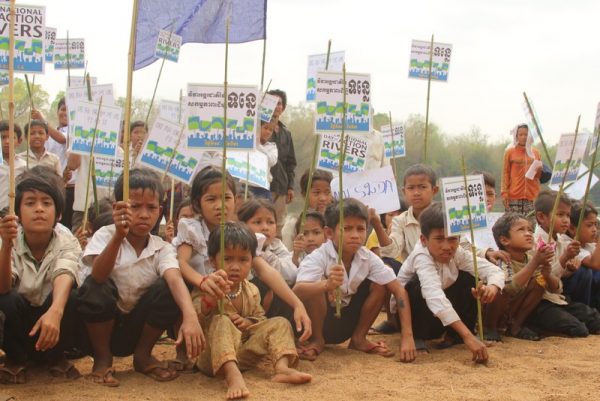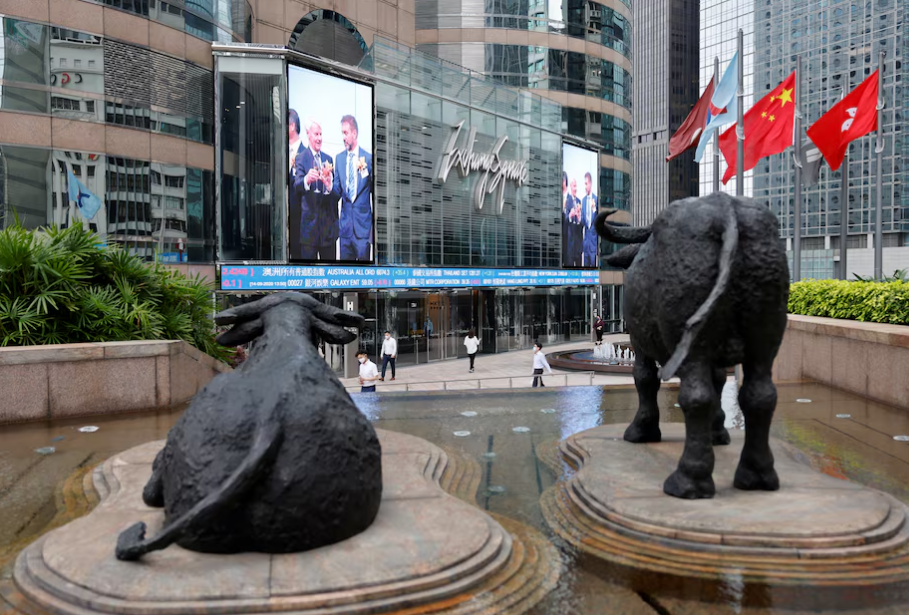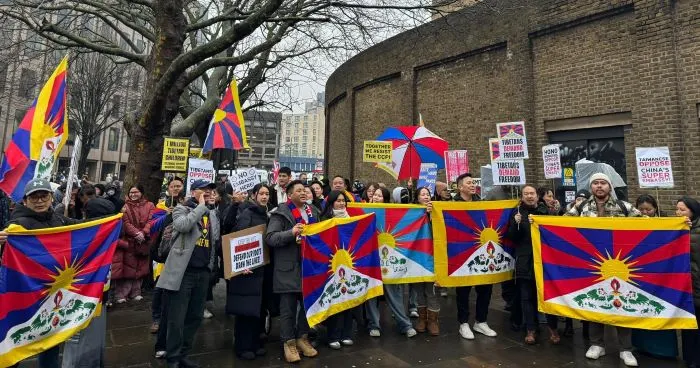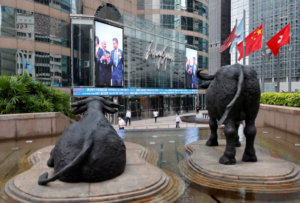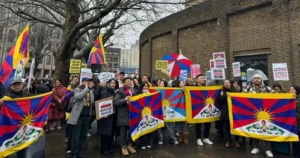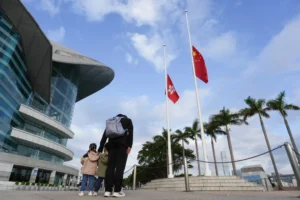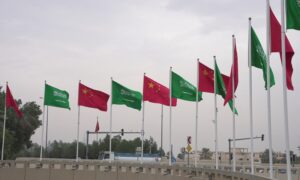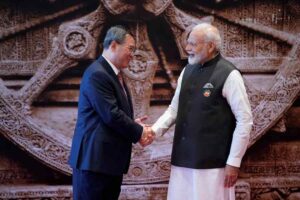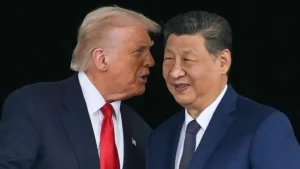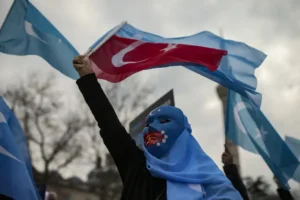Dam in Cambodia a ‘Disaster’ for Local Communities: Rights Group
Bunong ethnic minority children from Kbal Romeas village in northeast Cambodia celebrate the International Day of Action for Rivers on March 14, 2015. Two years later, the village was submerged by the reservoir of the Lower Sesan 2 dam.
A Chinese-financed hydropower mega-dam in northeastern Cambodia has been a “disaster” for local communities, validating warnings that were made by activists and environmentalists more than a decade ago.
In a new report released today, the New York-based organization Human Rights Watch (HRW) documents the cascading negative economic, social, and cultural externalities of the Lower Sesan 2 dam. Stretching across the confluence of the Sesan and Srepok Rivers, two tributaries of the Mekong River, the dam has been described as a key project of China’s Belt and Road Initiative (BRI).
In addition to displacing nearly 5,000 people, the project has also dented the livelihoods of tens of thousands of others both upstream and downstream of the mammoth dam wall, one of the widest in Asia.
“The Lower Sesan 2 dam has profoundly harmed local communities, leaving them poorer and worse off,” the report states. “It has caused massive damage to the ecology of rivers upstream and downstream of the project, resulting in major losses in fisheries populations.”
The dam was built and is operated by China Huaneng Group, a Chinese state-owned electricity generation company, which holds a 51 percent stake in the projected. Cambodia’s Royal Group, one of the country’s most well-connected conglomerates, controls 39 percent, while Vietnam’s state-owned electricity company EVN controls the remaining 11 percent. Chinese state banks provided most of the financing for the $800 million project.
Enjoying this article? Click here to subscribe for full access. Just $5 a month.
According to HRW, the Lower Sesan 2 project displaced nearly 5,000 people, many of them members of indigenous minority communities, whose villages were submerged by the dam’s reservoir. These residents were moved to areas with soil ill-suited to farming. Many received inadequate compensation. The project has also “likely contributed to decreases in fishery yields across the entire Mekong River system,” upon which tens of millions of people rely.
As the report points out, most of these impacts were anticipated long before the dam’s construction began in 2013. While working at the local Phnom Penh Post a decade ago, I reported several times on the concerns being expressed by environmental activists and the representatives of villages close to the proposed dam site. In 2009, a colleague and I interviewed a leader from Srekor village, now submerged by the dam’s reservoir, who told us that the community “absolutely oppose the dam, because there are likely to be a lot of negatives.”
Diplomat Brief Weekly Newsletter N Get briefed on the story of the week, and developing stories to watch across the Asia-Pacific. Get the Newsletter
The impacts were further spelled out in an environmental impact assessment (EIA) of the Lower Sesan 2 dam commissioned by Vietnam’s Power Engineering Consulting Joint-Stock Company 1, which was then in charge of the project. The EIA warned that the project “will cause some significant environmental and social impacts which must be balanced against the economic benefits of the project.”
However, in 2012, the project was taken over by China Huaneng Group, and the EIA report was presumably tossed out. The HRW report reveals that while local residents reported a limited degree of consultations with the Vietnamese firm, the Chinese company’s consultations consisted of occasions when they would be pressured to agree to preset terms of compensation.
As per HRW, Cambodian officials “ignored communities’ concerns and objections, dismissed calls for discussion of alternative project designs, provided wholly inadequate compensation to impacted communities, and failed to set up an effective grievance mechanism to address disputes.”
The impacts of the Lower Sesan 2 project reflect both a years-long pattern of evictions and land seizures in Cambodia, and the magnifying effect of China’s infrastructure ambitions, particularly as represented by the BRI. The BRI has advanced to the greatest extent in developing countries eager to improve their infrastructure yet impatient with the slow reporting process and more rigorous environmental and social impact assessments often demanded by Western governments and international funders.
Perhaps reluctant to cede one of its main market advantages, and perhaps unwilling or unable to affect the behavior of Chinese companies operating abroad, the Chinese government has done little to impose stricter standards on BRI recipient countries, instead mandating its companies to respect local laws. However, in places like Cambodia where the legal framework is weakly enforced or non-existent, or the ruling elite is eager to enrich itself from the project, this lack of conditionality, the HRW report argues, “set[s] the stage for widespread abuses to occur.”
In 2014, The Cambodia Daily published an investigation that found that Cambodia’s Royal Group, which is headed by the Australian-educated businessman Kith Meng, reaped huge profits from the felling and sale of timber from the dam’s 36,000-hectare reservoir while the dam was under construction. According to the newspaper’s report, Royal Group had the “carte blanche to fell and sell timber” inside the reservoir area; it also alleged that the company was also using this to “launder” illegally cut timber from further afield.
While most large-scale power generations projects represent a trade-off of economic benefits against environmental externalities, the HRW report makes a convincing case that there has been no meaningful attempt to balance the two priorities in the case of the Lower Sesan 2 dam.
“There is no evidence that the Chinese government ever imposed any obligations on the Chinese and Cambodian companies who built the dam to follow international and corporate social responsibility standards or provide adequate compensation for harms the project caused, or even standards that would apply had the dam been built in China,” the report concludes.
Enjoying this article? Click here to subscribe for full access. Just $5 a month.
With six other hydropower dams planned in Cambodia as part of the BRI, in addition to many other projects besides, this is a timely reminder that the Lower Sesan 2 project has been dogged not by lack of knowledge, but rather a dearth of political will.
